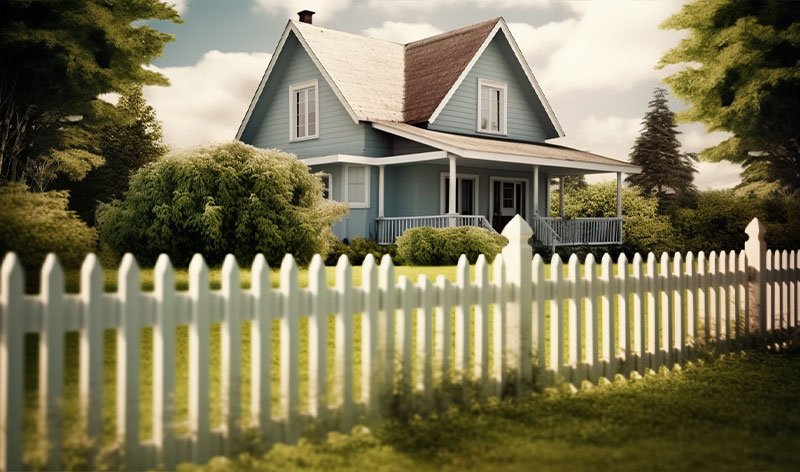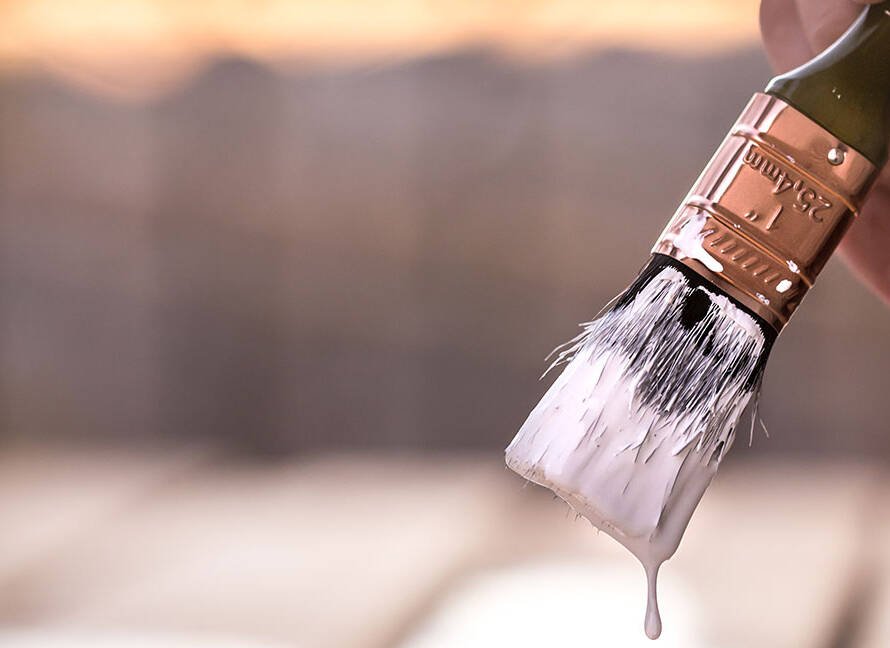Have you ever looked at your backyard and felt that something was missing? That the charm and beauty you envisioned for your outdoor space somehow fell short? If so, you’re not alone. Many homeowners struggle to create a visually captivating and enduring fence that enhances their overall landscape. But fear not, for there is a secret waiting to be unlocked – the art of expert fence staining.
Picture this: you’re strolling through a picturesque neighborhood, admiring the stunning fences that line the properties. Each fence exudes a sense of elegance, complementing the landscape effortlessly. It’s as if the fences themselves have a story to tell, capturing your attention and leaving a lasting impression. How did they achieve such beauty? What’s their secret?
In this blog post, we’re going to unveil the secrets of expert fence staining. We’ll walk you through the importance of fence staining and how it can transform your outdoor space. Together, we’ll explore the various types of stains and guide you in choosing the perfect one for your fence. We’ll also delve into the preparation process, application techniques, and maintenance practices that will extend the lifespan of your stained fence.

Understanding the Importance of Fence Staining
A fence is not just a mere structure; it’s an extension of your home, a reflection of your personality, and a boundary that sets the stage for your outdoor oasis. However, without proper care and protection, fences can deteriorate, lose their luster, and fail to reach their full potential.
Fence staining is more than just a cosmetic enhancement; it’s a shield against the elements. Just like how sunscreen protects your skin from harmful UV rays, a high-quality stain safeguards your fence from the wrath of nature. It acts as a protective barrier, preventing moisture, rot, pests, and sun damage from compromising the structural integrity of your fence.
Choosing the Right Stain for Your Fence
Now that we understand the importance of fence staining, let’s dive into the next secret – choosing the right stain. Think of it as selecting the perfect shade of lipstick to complement your complexion or the ideal paint color to bring out the best in your living room. The stain you choose for your fence can make all the difference in achieving the desired aesthetics and longevity.
There are various types of stains available, each with its own set of characteristics. Oil-based stains provide deep penetration and rich color, while water-based stains offer quick drying times and easier cleanup. Solid stains, on the other hand, provide excellent coverage and protection against the elements. Consider the wood type, climate, and the look you want to achieve when selecting the perfect stain for your fence.
Preparing Your Fence for Staining
Before diving into the staining process, it’s crucial to prepare your fence properly. Just like a painter preps their canvas before applying brush strokes, fence preparation sets the foundation for a flawless finish. Neglecting this step could result in poor stain penetration, uneven coverage, and compromised durability.
Start by cleaning the fence surface to remove dirt, debris, and any existing stain or sealant. Sanding any rough patches and repairing any damages ensures a smooth and even surface for the stain to adhere to. Don’t forget to protect surrounding areas and plants during the preparation process, just as you would cover nearby furniture when painting a room.
Applying the Stain
With your fence prepared and your chosen stain in hand, it’s time to unleash the transformative power of expert fence staining. Applying the stain requires a steady hand and a keen eye for detail, much like an artist bringing their masterpiece to life.
There are several techniques you can employ when applying the stain to your fence. Brushing is a popular method that allows for precise control and even distribution of the stain. Rollers provide a faster application for larger areas, while sprayers offer efficiency and coverage for intricate or hard-to-reach spaces. Choose the technique that suits your fence’s size, design, and your personal preference.
As you embark on the staining process, remember to follow the manufacturer’s guidelines for the specific stain you’re using. Apply the stain evenly, working in small sections to maintain consistency. Take your time and ensure each stroke covers the wood surface adequately. Once the stain is applied, allow sufficient drying time before considering additional coats.
Maintaining and Extending the Lifespan of Stained Fences
Now that your fence is beautifully stained and ready to shine, let’s explore the final secret: maintenance. Just like any investment, your stained fence requires routine care to retain its beauty and durability over time.
Regular maintenance practices are key to extending the lifespan of your stained fence. Keep your fence clean by removing dirt, debris, and mildew. Depending on the stain type, periodic resealing may be necessary to maintain its protective properties. Inspect your fence regularly for signs of wear or damage, and address any issues promptly to prevent further deterioration.
While DIY maintenance can be rewarding, seeking professional assistance ensures thorough inspections, expert repairs, and overall peace of mind. Professional maintenance services provide the expertise and attention to detail that will keep your fence looking stunning for years to come.
Conclusion
Congratulations! You have now unlocked the secrets of expert fence staining. By understanding the importance of fence staining, choosing the right stain, preparing the fence surface meticulously, applying the stain with care, and maintaining your stained fence regularly, you are well-equipped to transform your outdoor space and create a lasting impression.
Remember, the beauty of a stained fence extends far beyond its appearance. It’s a testament to your dedication, a symbol of the love and care you put into your home. So, go forth and unleash your creativity on your fence, knowing that you possess the knowledge to make it a masterpiece.
Frequently Asked Questions (FAQs)
- How often should I stain my fence? The frequency of staining your fence depends on various factors such as the type of stain used, weather conditions, and the level of wear and tear. As a general guideline, it is recommended to stain your fence every 2-3 years to maintain its beauty and protection.
- Can I stain my fence in extreme weather conditions? It is best to avoid staining your fence in extreme weather conditions such as heavy rain, high humidity, or extreme temperatures. Optimal staining conditions typically include mild temperatures, low humidity, and a dry forecast.
- What tools do I need for fence staining? The tools you’ll need for fence staining include a paintbrush or roller, a paint tray, a stain applicator, sandpaper or a sander for surface preparation, cleaning supplies, and protective gear such as gloves and goggles.
- Are there any environmentally-friendly staining options? Yes, there are environmentally-friendly staining options available. Look for stains labeled as eco-friendly, water-based, or low VOC (Volatile Organic Compounds) to minimize environmental impact while still achieving excellent results.
- Can I stain a fence that has been previously painted? In most cases, it is possible to stain a fence that has been previously painted. However, it is crucial to properly prepare the surface by removing any existing paint, sanding it down to a suitable condition for stain penetration, and ensuring compatibility between the old paint and the new stain.
- Do I need to sand my fence before staining? Sanding your fence before staining is highly recommended. Sanding helps remove any rough spots, loose paint or stain, and opens up the wood pores for better stain absorption. It also ensures a smooth and even finish.
- How long does it take for the stain to dry? The drying time for stain varies depending on factors such as the type of stain used, temperature, humidity, and ventilation. Generally, stains can take anywhere from a few hours to 24 hours to dry completely. It’s important to follow the manufacturer’s instructions for the specific stain you are using.
- Can I stain my fence myself, or should I hire a professional? Staining your fence yourself is definitely possible, especially if you have the time, patience, and proper tools. However, if you lack experience or have a large and complex fence, hiring a professional staining company can ensure a high-quality and efficient job.
- What is the average lifespan of a stained fence? The lifespan of a stained fence can vary depending on factors such as the type of wood, quality of stain, climate, and maintenance. Generally, a well-maintained stained fence can last anywhere from 5 to 10 years or even longer.
- Are there any specific safety precautions I should take when staining my fence? Yes, when staining your fence, it is important to take safety precautions. Wear appropriate protective gear such as gloves, goggles, and a mask to avoid contact with the stain and protect yourself from any fumes. Also, ensure proper ventilation in the area where you are working.



